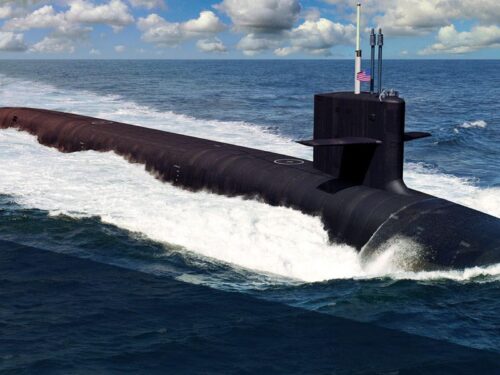Ships, floating offshore facilities, submarines, and deep-sea vessels and equipment are continually subject to harsh conditions like strong hydrostatic pressure, extreme temperatures, UV radiation, high winds, and saltwater and sea spray. This means all the components in these structures must be made from materials that can withstand the conditions without damage or failure. This is especially true with regard to sealing components that keep water out of enclosed areas and sensitive equipment.
RD Rubber specializes in creating high-quality, durable maritime industrial rubber seals from materials that can stand up to the challenges. Learn more about marine environments, common material options for marine-use seals, and some examples of how they are used in the real world.
The Challenges of Underwater and Marine Environments
There are several major challenges to which underwater and marine sealing components are exposed:
Corrosion
Seawater and salt spray are damaging to many materials, including rubber. Over time, materials can become corroded, chemically degraded, dried out, cracked, or otherwise compromised from exposure to salt. Failed seals may let in water or salt to sensitive equipment, causing further damage.
Pressure
In applications below water, pressure is high and rises quickly as depth increases. This can damage seals directly or cause components to compress or deform, which may dislodge seals or cause them to stop fitting correctly.
Biofouling
Marine environments are often home to organisms, like algae, barnacles, mussels, and others, that attach themselves to surfaces. This can cause chemical or physical damage, and make it difficult for sealing components to stay in place or be accessed. The process of removing built-up organisms can also scratch or gouge surfaces and sealing equipment.
Environmental Extremes
Marine applications are generally outdoors and exposed to the elements. Seals on this type of equipment must be made from materials that are resistant against high and low temperatures, UV exposure, and wind.
The Best Rubber Materials for Marine Environments
In marine environments, specialty materials that resist deformation, compression, corrosion, and brittleness make the best seals and gaskets for prolonged use. Some widely-used materials that handle temperature changes, corrosion from salt water, weathering, and more include:
- Nitrile Rubber. Nitrile rubber resists damage from oil and petroleum-based chemicals. It’s ideal especially for hydraulic systems in marine vessels.
- Silicone Rubber. This material stays flexible and pliable, even at high temperatures.
- EPDM Rubber. EPDM stands up to ozone exposure and UV radiation.
- Fluoroelastomer (FKM). Fluoroelastomers can resist damage from high temperatures, seawater, and many different chemicals.
- Chlorobutyl Rubber (CIIR). Chlorobutyl has strong adhesion properties – which is a great benefit for keeping airtight seals. It also stays flexible in cold environments which is a great benefit for regions of the ocean closer to the Earth’s poles as well as deep sea applications.
Marine Industry Seal Types & Applications
Choosing the right corrosion-resistant rubber materials ensures seals remain functional and reliable. Different applications use different types of seals and gaskets, such as:
- Mechanical Seals. These are used in and around machinery and equipment to keep oil, water, and other fluids away from machinery components, such as pumps or propeller shafts.
- Gaskets. Gaskets keep gases and liquid fluids either locked inside or outside of flanged joints.
- O-Rings. O-rings sit in a groove or recess between two mating surfaces. The two surfaces compress the o-ring and fill any gaps for a leak-proof seal.
- Hydraulic Seals. Hydraulic seals are used to seal in hydraulic fluids in steering systems, hatch covers, and other moving systems.
- Oil Seals. Oil seals, or shaft seals, lock lubricating oil in place inside of rotary shafts to protect parts and reduce friction in propulsion systems, gearboxes, and engines.
- Rubber Washers. Rubber washers are used to prevent leaks and also to distribute weight or pressure at fastening points. They fill gaps between mating surfaces to create a seal in valves, pumps, and other equipment.
- Back-Up Rings. These seals provide additional sealing support in case primary seals fail or accidentally extrude due to high pressure levels.
These common types of sealing components are used in many applications, from small watercraft and floating platforms to rubber seals for submarines, deep sea craft, and Navy applications.
Other Considerations for Marine Industrial Rubber Seals
The design, material, and manufacturing quality all play a role in how leak-proof or form-fitting a rubber seal is in operation. Routine inspection and maintenance also help seals to last longer and perform well.
Superior Quality Maritime Industrial Rubber Seals From RD Rubber
RD Rubber creates high-performance industrial rubber seals made from thermoset elastomers for use throughout the marine industry. Our capabilities include product development for critical to function applications, material selection, prototyping, custom molding, deflashing, overmolding, and more. We are committed to meeting or exceeding industry and MIL-SPEC standards, and we are ISO 9001:2015 and AS 9100:2016 certified and ITAR and DOD registered company.
Contact us today to learn more about our capabilities or request a quote to start your order.

